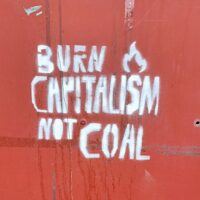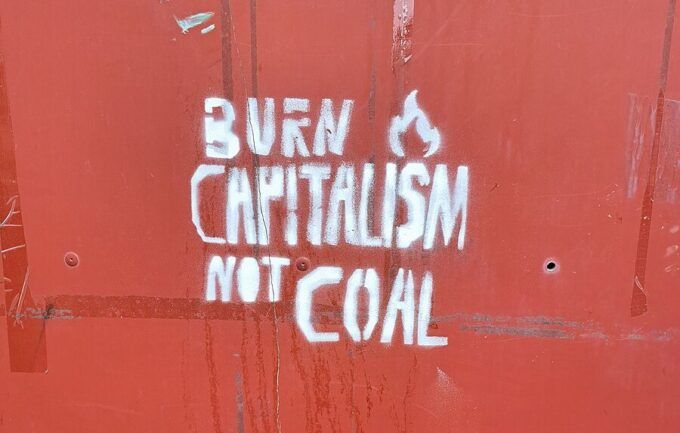

Photograph Source: Ramsch – CC BY-SA 4.0
In 1863, the Russian social critic, Nikolay Chernyshevsky, published a novel entitled “What Is to Be Done?” Its story revolves around a central heroine, Vera Pavlovna, and her four dreams. It brilliantly intertwines her personal life and the social turmoil of Russia’s transition at the time from feudalism to capitalism. Chernyshevsky, a revolutionary imprisoned by the Czarist government, wrote a novel that was nothing less than a pioneering work of socialist feminism. In it, he also passionately appealed for an urban, industrial economy based on worker cooperatives, a modern and transformed version of Russia’s earlier agrarian communes. An appreciative Lenin entitled one of his most important political pamphlets, published in 1902, “What Is to Be Done?”
Two decades later, after the Soviet revolution defeated foreign invaders and domestic enemies in a long civil war, Lenin returned to the theme of worker cooperatives. In Soviet circumstances, much changed from Chernyshevsky’s Russia, Lenin argued forcefully for the USSR’s activists to recognize the enormous importance of building, spreading, and respecting cooperatives as key to Soviet socialism’s future. Worker coops, he argued, answered the burning political question among activists then: what is to be done? Here I want to adapt and apply Lenin’s argument to today’s social conditions that are raising that same question even more urgently.
Today’s capitalism is global—the basic economic structure of the world economy features its core employer-employee model. The “relations of production” inside enterprises (factories, offices, and stores) position a small minority of workplace participants as employers. They make all the basic “business decisions” about what, how, and where to produce and what to do with the product (and revenue when they sell it). They alone make all those decisions. Employees, the majority of workplace participants, are excluded from those decisions.
Capitalism today is also globally divided into two major blocs: one old and one new. The old is allied with the United States. Besides being older, the G7 is now the smaller of the two blocs, having shrunk in relative global importance over recent decades. It includes the UK, Germany, France, Italy, Canada, and Japan as well as the United States. The now fast-rising newer bloc, the BRICS, first included Brazil, Russia, India, China, and South Africa. Recently, it invited six new member states to join, as of January 2024: Egypt, Iran, Saudi Arabia, Ethiopia, and Argentina. Since 2020, the BRICS’ total GDP exceeded that of the G7, and that gap between them keeps growing.
The G7’s “mature capitalisms” all survived and grew because workers accepted the employer-employee organization of workplaces. Amid and despite the G7 nations’ endless ideological celebrations of democracy, workers accepted the total absence of democracy inside capitalist enterprises. With some exceptions and resistance, it became routine common sense that representative democracy somehow belonged in residential communities but not in the communities at work. Inside capitalist enterprises, autocracy was the norm. Employers ruled employees but were not democratically accountable to them. Employers in each capitalist enterprise enriched a select circle by delivering portions of the revenue to themselves, to owners of the enterprise, and to a few top executives. That select circle wielded extraordinary political and cultural influence. It replicated the absence of democracy inside its enterprises by keeping the democracy outside them merely formal. Governments in capitalism were typically shaped by that select circle’s paid lobbyists, campaign donations, and paid mass-media productions. In modern capitalism, the kings and queens banished in earlier centuries reappeared, altered, and relocated, as CEOs inside ever larger capitalist enterprises dominating whole societies.
Employees’ actual or anticipated opposition to democracy’s exclusion inside workplaces has always haunted capitalism. One major way employers can deflect such opposition is by narrowly defining their obligation to employees in terms of wages paid to enable consumption. Wages adequate for consumption became the necessary and explicitly sufficient compensatory reward for work. Implicitly, they likewise became the employees’ compensation for the absence of democracy within the workplace. Rising levels of employee consumption signaled a “successful” capitalism. In stark contrast, rising democracy inside the workplace never became a comparable standard for evaluating the system.
Making consumption the point and purpose of work contributed to a social overvaluation of consumption per se. Advertising contributed to that overvaluation too. Modern capitalist society added “consumerism” to its catalog of moral failings. Clerics thus routinely caution us not to lose sight of spiritual values in rushing to consume (of course, those spiritual values rarely include democratic rights inside workplaces).
Confronted and outcompeted by China and the BRICS, G7’s declining empires and economies now risk that mass consumption will increasingly be constrained. In declining empires, the rich and powerful preserve their wealth and privileges while offloading the costs of decline onto the mass of employees. Automating jobs, exporting them to lower-wage regions, importing cheap immigrant labor, and mass campaigns against taxes are the tried-and-true mechanisms to accomplish that offloading.
Such “austerities” are now in full swing nearly everywhere. They explain a good part of the mass working-class anger and bitterness in the older (G7-type) capitalisms expressed in gestures against social “elites.” Given capitalism’s long favoritism shown to its right-wing versus its left-wing critics, it should surprise no one that the anger and bitterness first take right-wing forms (Trump, Boris Johnson, Wilders, Alternative for Germany, and Meloni).
The political temptation for the left will be to focus again as it did in the past on demanding rising consumption now that a declining capitalism undermines it. Capitalism promised a rising consumption that it now fails to deliver. Fair enough, but that is not enough. Often in the past, capitalism was able to deliver rising real wages and workers’ living standards. And it may yet again. Indeed, China is now delivering just that.
The clear lesson is that the left needs a new and different answer to the question of what is to be done. Its criticism must effectively criticize and oppose capitalism when and where it is delivering rising wages and likewise when and where it is not.
Now is the time to expose and attack capitalism’s deprivation of democracy in the workplace and the resulting social ills (inequalities, instabilities, and merely formal political democracy). Workers’ goals never needed to be and should never have been limited to raising wages, important as that was and is. Those goals can and should include a demand for full democracy inside the workplace. Otherwise, whatever reforms and gains workers’ struggles achieve can subsequently be undone (as happened to the New Deal in the United States and social democracy in many other countries). Workers have had to learn that only democratized workplaces can secure the reforms workers win. What is to be done in the old, declining centers of capitalism is for class struggles to include the democratization of enterprises. A transition toward economies grounded on worker-cooperative enterprises is the strategic target.
In the new, ascending capitalisms in the world, the BRICS, a different logic leads again toward worker cooperatives as a focal goal for socialist politics and organizing. Among the BRICS, the same employer-employee model organizes factories, offices, and stores. Unlike the G7, the employers are relatively more often not private. Rather, some employers run privately owned enterprises, while others are state officials who operate enterprises owned by the state. In the People’s Republic of China, where roughly half of enterprises are private and half public, nearly all have adopted the employer-employee organizational model.
Where the state takes a large, major, or commanding role in economic development and especially where one or another socialist ideology accompanies and justifies that role, a turn toward a focus on worker cooperatives is now timely. It will attract many in those countries as socialism’s necessary next step. The “development” or socialism accomplished there—macro-level changes already achieved (via decolonization struggles and revolutions)—are celebrated but also widely understood as insufficient. Bigger social goals and changes motivated those struggles and revolutions. Democratizing enterprises takes “development” to a whole new level reaching toward those goals.
There is yet another source of the answer that now responds to the question: what is to be done? The qualities of democracy that have been achieved within the G7, the BRICS, or most other countries, to date have been more formal than substantive. Where elections of representatives occur, the influences of wealth and income inequalities, the social power wielded by CEOs, and their controls over mass media render democracy more symbolic than real. Many people know it; still more feel it. Extending democracy into the economy and specifically into the internal organization of enterprises represents a major step in moving political democracy beyond merely formal and symbolic to substantive and real. And much the same applies to moving socialism beyond its earlier forms.
The old cry to workers of the world to unify—“You have nothing to lose but your chains”—was an early, partial answer to the question: What is to be done? After a century and a half of development and socialisms, we can now provide a much fuller and more specific answer to that question. To get beyond capitalism’s core—the production relations of employer versus employee—we need explicitly to replace those relations with a democratized workplace, to substitute workers’ self-directed cooperatives for hierarchical capitalist business.
This article was produced by Economy for All, a project of the Independent Media Institute.Richard Wo
The post What Is to Be Done? appeared first on CounterPunch.org.
This content originally appeared on CounterPunch.org and was authored by Richard D. Wolff.